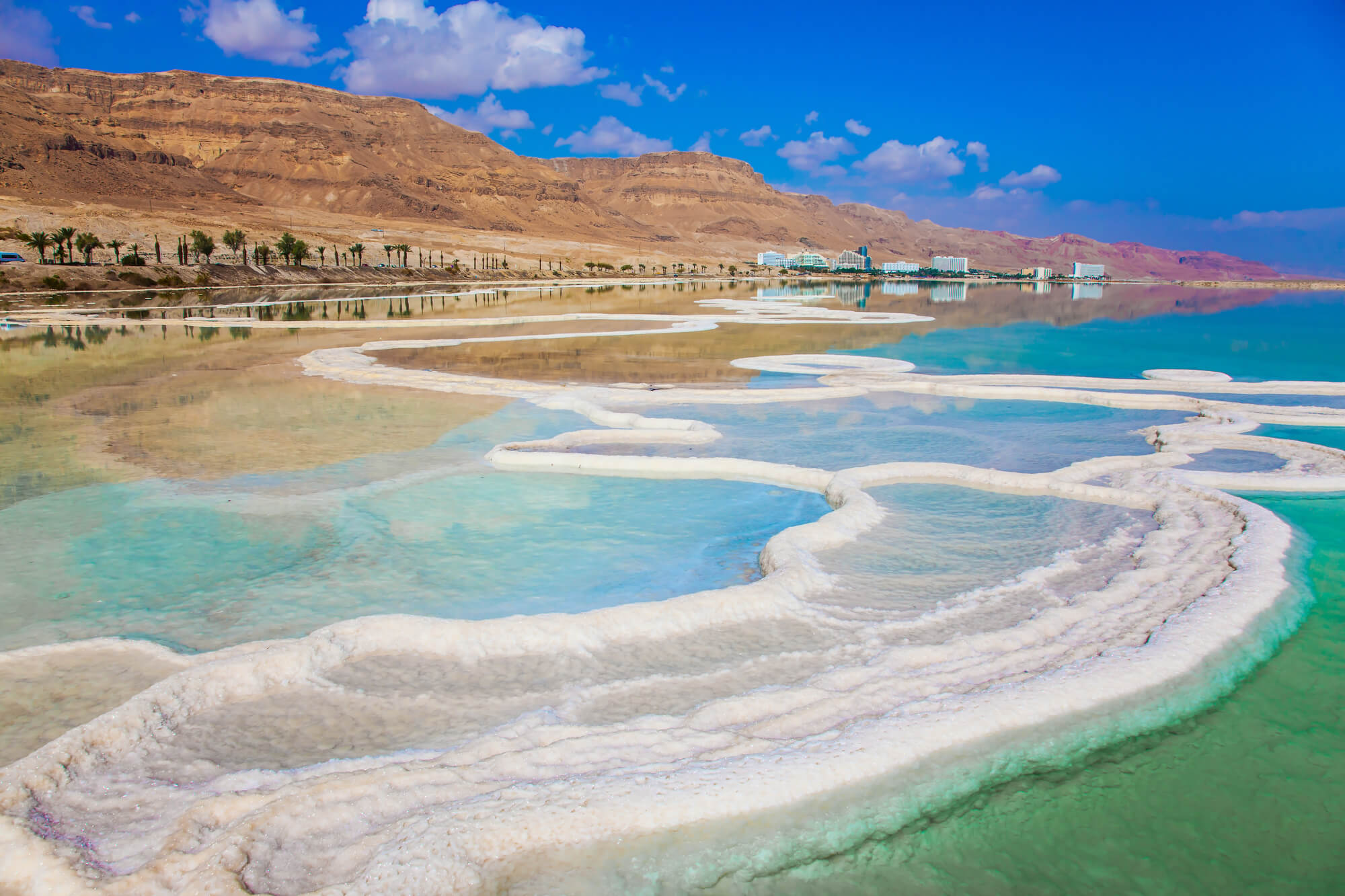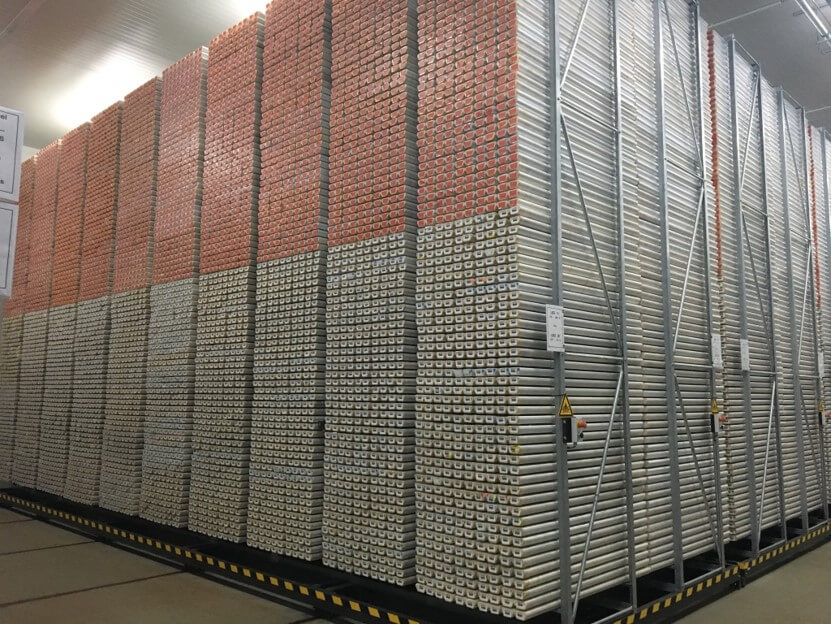A group of Israeli geologists has been investigating the deep layers of the Dead Sea floor for the last decade, with the aim of revealing the climatic history of the area and producing local and global climatic forecasts. The conclusions of the studies may illuminate climate research in a new light
to meOr Shek, Angle - news agency for science and the environment

What is hidden in the depths of the Dead Sea? What information lies beneath the bottom of the world's lowest lake? These are some of the questions that led a group of Israeli scientists to start drilling in the Dead Sea area, to try and extract its secrets from the depths of the earth.
The deep drilling research project in the Dead Sea that began in November 2010 and continues to this day, provides a rare glimpse into the climate conditions that prevailed in the eastern Mediterranean basin in the past hundreds of thousands of years. Soil layers located hundreds of meters below the bottom of the Dead Sea document periods of flooding, periods of prolonged dryness and heavy rains, and are a tool for learning about the past, from which we can deduce the climate conditions that will prevail in our region in the future.
The largest international research drilling project done in Israel, led by a team led by Prof. Motti Stein from the Institute of Earth Sciences at the Hebrew University of Jerusalem and the Geological Survey of Israel andICDP Scientific Drilling Organization takes place in a unique location. The Dead Sea basin is located between the desert zone and the Mediterranean climate zone, and as a result the Dead Sea receives water and sediments from two different climate zones.
"The deep drilling in the Dead Sea teaches us about the climatic history of the Levant region over the last 220 years," says Stein. "Geological and geochemical observations observed in drilling have a huge potential for understanding past and present climatic phenomena."
Time capsules
The drilling researchers take drill cores out of the ground - cylinders varying in length of several meters, which consist of dark and light layers a few millimeters thick, called laminae. "So far, samples have been extracted from a depth of nearly 1,000 meters under the ground," says Stein. "The bright laminae are made of a mineral called aragonite and they sink from the lake water and carry information about the composition of the ancient water and the sources of that water. Dark laminae are made of thin alluvial materials and carry information about their sources and the ways they were transported to the lake, for example by floods."
The rolls that were removed as part of the research are currently kept in a dedicated roll warehouse at the University of Bremen in Germany and are an available source of information for the purposes of continuing future geological and climatic research.

The drill cores were extracted in two major drillings in the Dead Sea in 2010 and 2011 from a depth of up to 450 meters below the bottom of the Dead Sea. The composition of the layers in the drilling cylinders and the water trapped within the layers, make it possible to reproduce the conditions that prevailed in the Dead Sea such as the salinity of the water, for example, or the height of the water level in the lake at the time of the salt deposition.
"It is possible to trace the source of the water that fed the lake during the period when the salt in the white layers sank," Stein explains. "We do this by measuring the chemical elements in the water. Thus, for example, there is a big difference in the composition of water that originates from the northern Jordan and water that originates from floods that reach the lake through Nahal Arba."
The identification of the changes in the water composition along the layers in the drill core shows a cycle between wet periods and extreme dry periods over hundreds of thousands of years. "When The research data were crossed with The research of Dr. Yael Kiro, a geochemist from the Weizmann Institute of Science, Dealing with the changing ratios of the isotope ratios of uranium along the column of drill cores, we identified periods of extreme dryness when the Jordan did not flow and the Dead Sea mainly received floodwaters from the Arabah. This situation characterizes the last interglacial period, about 120 years ago," says Stein.
A change in sea level signals a change in climate
Not only the drill cores are used by the researchers in the Dead Sea to assess the environmental changes that have occurred around the lake. Dr. Nurit Weber from Stein's research team found that The plaster buildings found on Einat Kedem beach were created during periods when the Dead Sea levels were low And therefore the ancient coastline of the Dead Sea is indicated throughout the last 7,000 years.
"The evidence for periods of low water levels on the Einat Kedem beach corresponds to the evidence for dry periods from the drill core," says Stein. "In many periods during the last thousands of years, the Dead Sea was at low levels close to its current level as a result of prolonged dry periods."
Geologists for the environment
"The role of geologists is to tell about natural processes that happened in the past and continue to exist in the present, while creating future scenarios," says Stein. "Scientists collect information from various climatic components, and build a general picture that makes it possible to trace climatic periods that drive the climatic changes in the various regions, including in the eastern Mediterranean," he says. "From these findings it can be concluded that we are in a prolonged period of natural dehydration. which will last at least another thousand years. The regional and global dehydration is representative A natural trend that occurs throughout the entire Holocene period And maybe which will reach its peak in the next few hundred years".
Do the research findings in the Dead Sea indicate, therefore, that human activity does not affect global climate change?
Stein explains that the anthropogenic contribution (the impact of human activity on the environment - for example through the emission of greenhouse gases from transport, industry and agriculture) does indeed create an amplifying effect for the natural warming and drying trend. "The eastern part of the Mediterranean basin is on the edge of the desert and is naturally subject to drying out. However, as a result of man's polluting activity caused, among other things, by the production of energy from non-renewable sources, the increasing production of waste, and the breeding of farm animals, climate models predict that there will be a significant increase in the phenomenon of natural dehydration," he says. "In this sense, the Mediterranean basin is "hot "Spot" for climatic changes related to human activity.
"We geologists strive to increase cooperation with other scientific communities and to integrate our models with the global climate models," concludes Stein. "I believe that the combination between drilling data and climate models leads to significant consequences for understanding the dynamics between the forces that dictate changes in the climate system both at the regional and global level."
